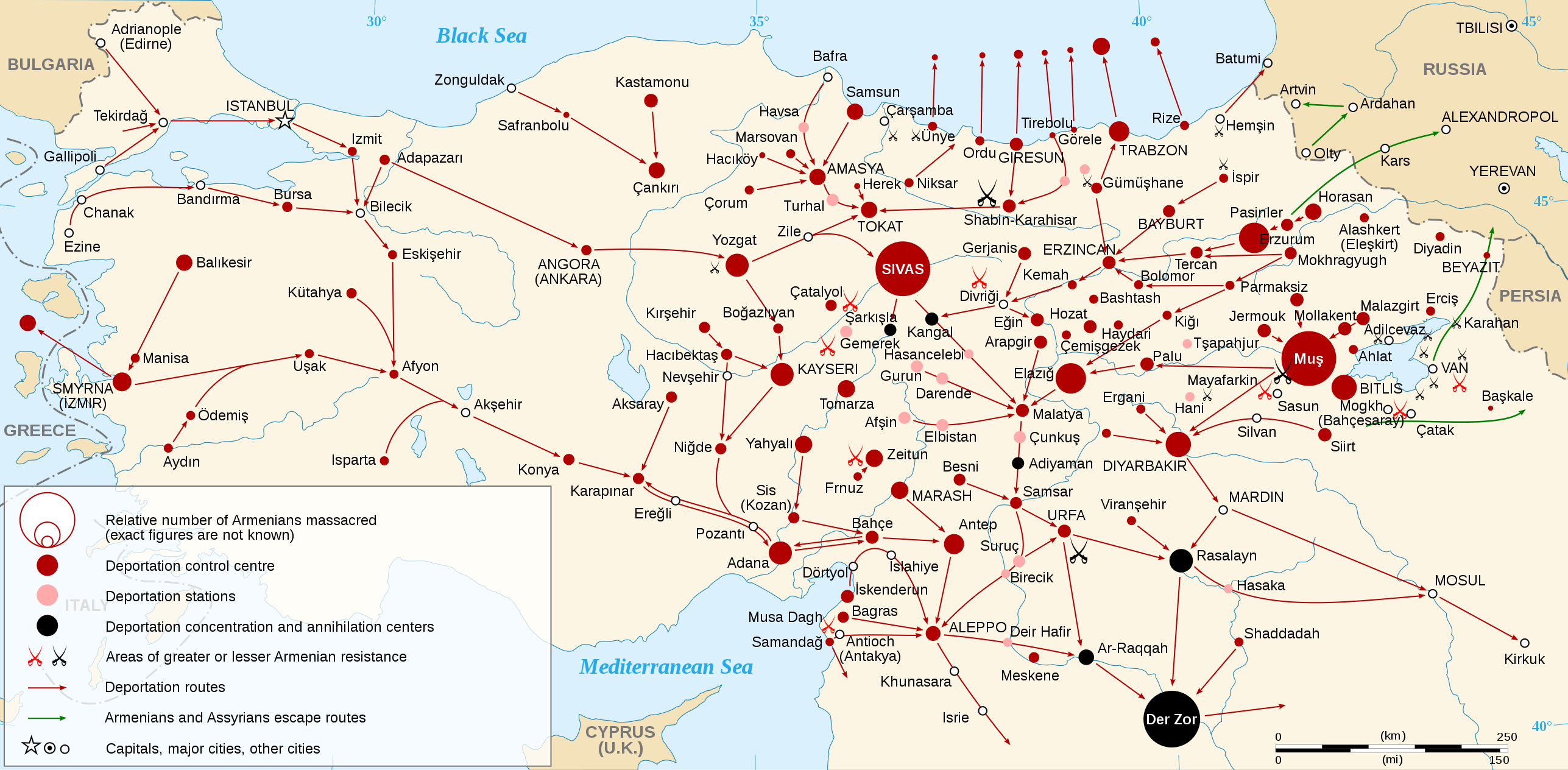Armenia – Azerbaijan Conflict Mapped
This post may contain affiliate links. As an Amazon Associate, we earn from qualifying purchases.
The Armenia-Azerbaijan conflict, often referred to as the Nagorno-Karabakh conflict, is a long-standing and deeply rooted territorial dispute in the South Caucasus region. It centers around the Nagorno-Karabakh region, an ethnically Armenian enclave located within the internationally recognized borders of Azerbaijan. This conflict has its origins in the early 20th century, but it escalated significantly in the late 1980s and early 1990s, leading to a full-scale war.
The central issues in the conflict revolve around competing territorial claims and ethnic tensions. Nagorno-Karabakh, historically populated by ethnic Armenians, sought autonomy and eventually independence from Azerbaijan as the Soviet Union began to dissolve in the late 1980s. The desire for independence led to violent clashes between ethnic Armenians and Azerbaijanis in the region.
In 1991, Nagorno-Karabakh declared its independence, a move that was not internationally recognized. This declaration of independence triggered a full-scale war between Armenian forces, who supported the self-proclaimed Nagorno-Karabakh Republic, and Azerbaijani forces. The war lasted until a ceasefire agreement was brokered in 1994, resulting in a de facto ceasefire that has held, with occasional flare-ups, until recent years.
The war had significant human, social, and economic costs. It led to a substantial loss of life, displacement of populations, and widespread destruction in the region. By the end of the war, Nagorno-Karabakh and several surrounding regions were under Armenian control, leading to the displacement of the Azerbaijani populations. According to the World Factbook, 230 thousands Armenians from Azerbaijan and 800 thousand Azerbaijanis from Armenia and Karabakh have been displaced because of the conflict, practically cleansing Armenia and Karabakh from Azerbaijanis and Azerbaijan of Armenians.
The ceasefire of 1994 did not bring a lasting resolution to the conflict. The situation remained fragile, with both sides accusing each other of ceasefire violations. Periodic outbreaks of violence occurred along the Line of Contact, a heavily fortified boundary separating Armenian and Azerbaijani forces.
In September 2020, the conflict experienced a major escalation when large-scale fighting erupted in Nagorno-Karabakh. This escalation resulted in significant casualties and destruction. After the capture of Shusha, which is the second-largest city in Nagorno-Karabakh, a ceasefire agreement was concluded, bringing an end to all hostilities in the region as of November 10, 2020.
In addition, border crises regularly erupted between the two countries. For instance, in August 2021, Azerbaijani forces blockaded southern Armenia (Syunik) by locking the main north-south highway, which cut off all international transit with Iran and forced Armenia to create alternative routes.
Key challenges in resolving the Armenia-Azerbaijan conflict include the core issues of territorial dispute, the status of Nagorno-Karabakh, and surrounding regions. Armenia insists on the right to self-determination for the predominantly Armenian population in Nagorno-Karabakh, while Azerbaijan maintains its territorial integrity and sovereignty over the region. Additionally, addressing the needs and rights of refugees and internally displaced persons, ethnic and religious tensions, and the involvement of various international actors further complicates efforts to find a peaceful solution.
On 12 December 2022, under the cover of “environmental protests, “, Azerbaijan started an illegal blockade of the Republic of Artsakh, which is proceeding. Starting from March 26, 2023, the Azerbaijani government intensified its blockade efforts. This included taking control of strategically important areas surrounding the Lachin corridor, both inside Artsakh and Armenia. They established a military outpost that obstructs access to a critical bypass dirt road that previously provided relief, blocked the original route of the Lachin corridor, and established a checkpoint at the new corridor section. Amid the blockade, Azerbaijan deliberately targeted and disrupted crucial civilian infrastructure that provides essential supplies to Artsakh, including gas, electricity, and Internet services. President Aliyev of Azerbaijan has stated that “Armenians residing in Karabakh must either choose Azerbaijani citizenship or seek alternative places of residence” and has issued a military action threat if the Artsakh government does not dissolve.
Between 19 and 20 September 2023, Azerbaijan began a military invasion against the self-declared breakaway state of Artsakh populated by Armenians.
The map below created by Reddit user He-is shows the recent developments in the Armenia – Azerbaijan conflict.

The Armenia-Azerbaijan conflict serves as a complex and unresolved issue with deep historical and geopolitical roots. Despite international mediation efforts, achieving a lasting and comprehensive settlement remains a significant challenge in the South Caucasus region.
To learn more about Caucasus, see:








